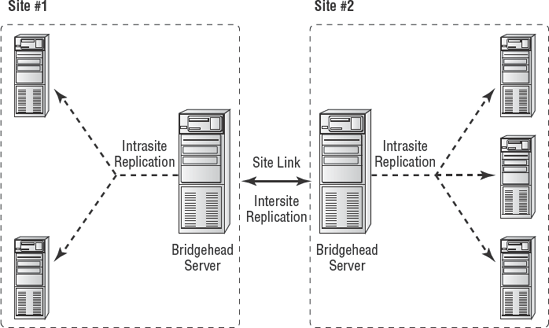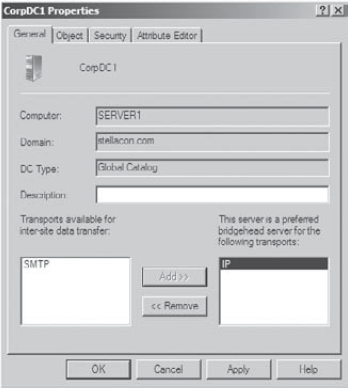2.4. Creating Bridgehead Servers
By default, all of the servers in one site
communicate with all of the servers in another site. You can, however,
further control replication between sites by using bridgehead servers. Using bridgehead servers helps
minimize replication traffic, especially in larger distributed star
network topologies, and it allows you to dedicate machines that are
better connected to receive replicated data. Figure 5 provides an example of how bridgehead servers work.

You can use a bridgehead server to specify which
domain controllers are preferred for transferring replication
information between sites. Different bridgehead servers can be selected
for RPC over IP and SMTP replication, thus allowing you to balance the
load. To create a bridgehead server for a site, simply right-click a
domain controller and select Properties, which brings up the bridgehead
server's Properties dialog box (See Figure 6).
To make the server a bridgehead server, just select one or both
replication types (called transports) from the left side of the dialog
box and click the Add button to add them to the right side of the
dialog box.
